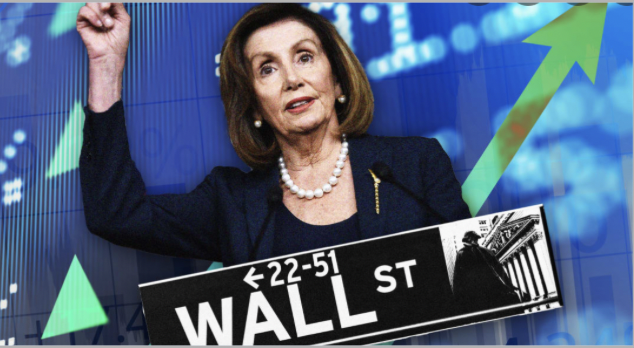As the EV (electric vehicle) industry continues to broaden its horizons, EV stocks have gradually become a popular investment choice. It’s projected that the worldwide market for electric cars will reach an overall value of more than $1.1 trillion by 2030. You can see that the recently budding industry more or less became its own stock sector, in a sense. If it were to do so seriously, I’d be fine; that’s what happens next. The EV market is anticipated to expand annually at 22.5% from 2022 to 2030.
Remember when you could take the battery out of cell phones? Imagine one of those, but the size of a large piece of airport luggage. One would assume otherwise, but this list does not include Tesla (TSLA). Is there even one inventor who carried on as a career CEO? Musk’s innovations are the stuff of legends. Unfortunately, Teslas are expensive and tend to have bizarre maintenance issues. Fortunately for investors and drivers, the publicly traded major car companies on which we’ve relied for decades now use batteries. That’s not all! They build better cars. Elon will be remembered in history for a variety of reasons, but not as a career automaker. I’m getting a Subaru next; I’ve always wanted one.
I’ll now showcase three stocks that are in a position to dominate the EV space. Experts agree that these buy-rated tickers come with just about anything you’d want in a good stock:
General Motors Co (GM)
General Motors Company (GM) designs, manufactures and sells automobiles, trucks, and vehicle components. GM provides financing through their business dedicated solely to keeping good books, officially referred to as GM Financial Company, Inc. GM is divided into Financial, North America, international, and cruise segments. Chevrolet, GMC, Cadillac, Buick, OnStar, Maven, and Holden are among the well-performing brands sold by GM. William C. Durant created the corporation on September 16, 1908, and headquartered in Detroit, Michigan.
Detroit, “Motor City,” MI, funded the successful mass production model that other industries emulated. GM is a big part of the city and state’s collective pride. GM’s stock value is down by 34.91% YTD. It’s difficult to reconcile that with the fact that GM’s market valuation is $54 billion, and it’s expected to report about $40 billion in revenue for Q4. Along with GM’s recent earnings report, the firm also committed, saying that before too long, it’ll “have everyone in an EV.” GM’s most notable figures include its ROE (return on equity) of 14.55%, an operating margin of 8.17%, a profit margin of 6.57%, and a healthy P/E (price to earnings) ratio of 6.5x. GM has a dividend yield of 0.94% and a quarterly payout of 9 cents per share ($0.36/yr). Analysts that offer 12-month pricing estimates give GM a median price target of 44.50, with a high of 90.00 and a low of 30.00. This shows a 16.61% increase from its last price, and it was no surprise to find that GM has a buy rating
Ford Motor Co (F)
Ford Motor Co. (F) is a multinational American automaker that, as those of us who paid attention in 5th grade Social Studies should remember, Henry Ford founded on June 16th, 1903. The firm offers cars and commercial vehicles under F‘s self-titled brand and luxury vehicles under Lincoln. The Ford family has considerable control of the corporation; they comprise the minority at F but have a majority of the voting power. F devised methods for large-scale automobile builds and industrial labor management, which implemented highly effective structured sequences that featured moving assembly lines; During the 1910s, these approaches were recognized worldwide as “Fordism.”
While young, I had a neat imagination and wrote stories, but I don’t think it ever crossed my mind as a possibility that in just 2 or 3 short decades, we would be using natural resources to charge batteries strong enough to power an 18-wheeler– I want to get an F-150 Lightning. F is considered below fair value. Per an interesting analyst consensus, I learned if I bought stock today, I’d be rewarded with a potential 67% return within five years. F has a P/E ratio of 5.85x and a Return on Equity margin of 22.49%. Having $2.6 billion in active free cash flow certainly can’t hurt either. F’s stock is down by 36.78% YTD, but with $42.1 billion in estimated sales for F’s fourth quarter, the company’s resilience is evident. F has a dividend yield of 4.57%, with a quarterly payout of 15 cents per share ($0.60). Analysts that offer annual price predictions give F a median price target of 14.00, with a high of 28.00 and a low of 10.00. This is a 6.63% increase from F’s last price, and even while the high range of a pricing forecast is low, the consensus recommendation to buy now and hold has its heart in the right place.
Stellantis NV (STLA)
Stellantis NV (STLA) designs, engineers, manufactures, distributes, and sells cars and light commercial vehicles, production systems, transmissions, engines, and metallurgical materials worldwide. STLA sells luxury, premium, and mainstream passenger automobiles, pickup trucks, SUVs, commercial vehicles, parts and services, retail and dealer financing, leasing, and rental services. STLA’s products are marketed under premium brands such as Alfa Romeo, Chrysler, Dodge, Fiat, Jeep, Ram, Opel, and Peugeot. STLA offers its goods both directly and through distributors and dealers. STLA was established in 1899 and had its headquarters in Hoofddorp, the Netherlands.
STLA is the “odd man out” on this list. As some may know, I try to pick one out of my three that might be overseas, for instance, or perhaps it’s brand new and needs customers. It could just be shy. Well, STLA certainly fits a different kind of mold. Year-to-date, STLA’s stock price is down 20.90%, which isn’t necessarily bad, especially if a stock gets away from its intrinsic worth. STLA, at $1.26 per share, shows forecasted Q4 sales of $46 billion, representing year-over-year revenue growth of 78.74%. STLA’s trailing 12-month (TM) EPS is $5.09, representing remarkable positive growth. STLA, over the last 12 months, has managed to keep $3.1 billion in free cash flow, despite everything. STLA has a P/E ratio of 2.9x and a P/S measure of 0.34. STLA has a dividend yield of 7.20%, with a quarterly payout of 27 cents per share ($1.08 per share/yr annually). The analyst who provides 12-month price projections has given STLA a consensus median price target of 19.92, with a high of 34.00 and a low of 14.84. That estimate represents a 34.26% increase over its last price. Consider this: with STLA’s stock down year-to-date by 20.90%, it’s easier to justify its buy rating.
Read Next – Have you seen it yet? Appalling…
This is causing a lot of controversy…
It’s a new documentary called The Two Men Destroying America.
And a lot of powerful people would rather this exposé never saw the light of day. Chances are, they’ll attempt to have it scrubbed from existence.
That’s because it tells the true (and terrifying) story of how two men from New York have engineered a reset of not just your personal wealth, but the entire US economic system.
















 and then
and then